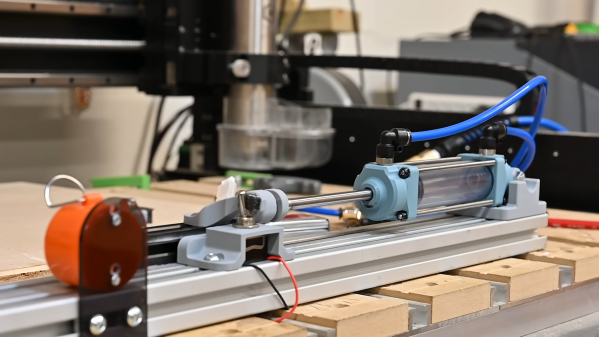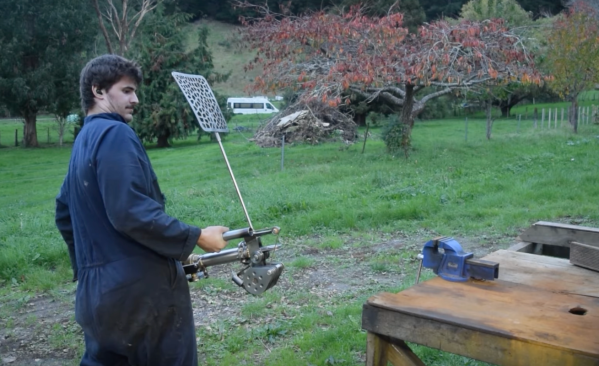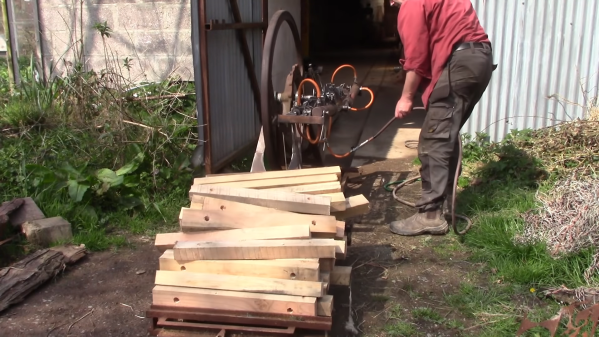Few consumer-grade PCs are what you’d categorize as built to last. Most office-grade machines are as likely as not to give up the ghost after ingesting a few too many dust bunnies, and the average laptop can barely handle a few drops of latte and some muffin crumbs before croaking. Sticking a machine like that in the shop, especially a metal shop, is pretty much a death sentence.
And yet, computers are so useful in the shop that [Lucas] from “Cranktown City” built this neat industrial-strength monitor arm. His design will look familiar to anyone with a swing-arm mic or desk light, although his home-brew parallelogram arm is far sturdier thanks to the weight of the monitor and sheet-metal enclosure it supports. All that weight exceeded the ability of the springs [Lucas] had on hand, which led to the most interesting aspect of the build — a pair of pneumatic locks. These were turned from a scrap of aluminum rod and an old flange-head bolt; when air pressure is applied, the bolt is drawn into the cylinder, which locks the arm in place. To make it easy to unlock the arm, a pneumatic solenoid releases the pressure on the system at the touch of a button. The video below has a full explanation and demonstration.
While we love the idea, there are a few potential problems with the design. The first is that this isn’t a fail-safe design, since pressure is needed to keep the arm locked. That means if the air pressure drops the arm could unlock, letting gravity do a number on your nice monitor. Second is the more serious problem [Lucas] alluded to when he mentioned not wanting to be in the line of fire of those locks should something fail and the piston comes flying out under pressure. That could be fixed with a slight design change to retain the piston in the event of a catastrophic failure.
Problems aside, this was a great build, and we always love [Lucas]’ seat-of-the-pants engineering and his obvious gift for fabrication, of which his wall-mount plasma cutter is a perfect example.
Continue reading “Custom Pneumatic Cylinders Lock This Monitor Arm In Place”


















